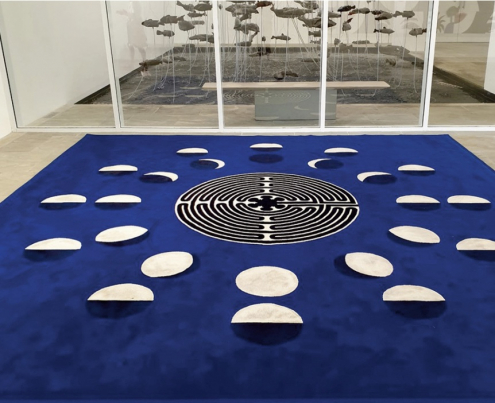Marinus Boezem in Ulysses' Dream at Foundation Carmignac

Marinus Boezem in Ulysses' Dream at Foundation Carmignac
This year, the Villa Carmignac will present an exhibition inspired by the Greek hero who sailed for ten years to return home after the Trojan War (The Iliad). Legend has it that Ulysses reached the shores of Porquerolles Island, where he fought and struck down the Alycastre, the monster sent by Poseidon and sculpted by the artist Miquel Barceló at the entrance of the Villa Carmignac.
On this wild Mediterranean island off the coast of Hyères in the South of France, where the light, sea, trees and caves are the same as in Homer’s time, gods and myths are still very much alive. The Odyssey continues to accompany us and to help us live, like some more contemporary works of art, which sometimes light our way.
Thanks to the intuition of this year’s guest curator, Francesco Stocchi, a curator at the Boijmans van Beuningen Museum and of the Swiss Pavilion at the 2022 Venice Biennale, the Villa Carmignac will be transformed into a labyrinth for this exhibition. Is Ulysses’ decade-long journey of return, with its diversions, impasses and traps, not a labyrinthine journey drawn on the sea?
In a disorientating scenography of meandering corridors and crossings that multiply the possible circuits, you will be constantly faced with choices: take this path or turn their back on it, see one work and not another. You will have to navigate by avoiding the traps and illusions – mirrors, trompe-l’oeil and other tiny spaces – scattered along the way by the scenographer, Margherita Palli.
Unlike classical labyrinths, which are devoid of references, this one has the particularity of being populated by works of art. You will wander through the maze, making choices about which path to take and coming face to face with works depicting women and seduction, monsters and their terrifying potential, heroes, fabulous and divine beings, animals and more. Among these human and non-human figures, in the labyrinth, travellers may recognise a little of themselves, and discover the means with which to explore their own secrets.
Marinus Boezem's Tapis Velours (1998) is on display as part of Ulysses's Dream.
The labyrinth, a physical and mental space par excellence, opens up to an introspective journey. For Ulysses, it is a journey of the return to the self, as well as to his island; for the visitors, walking in his footsteps and forging new paths on this island, it is a contemporary and intimate odyssey.
Find more information here.
Publication date: 22 Sep '22
